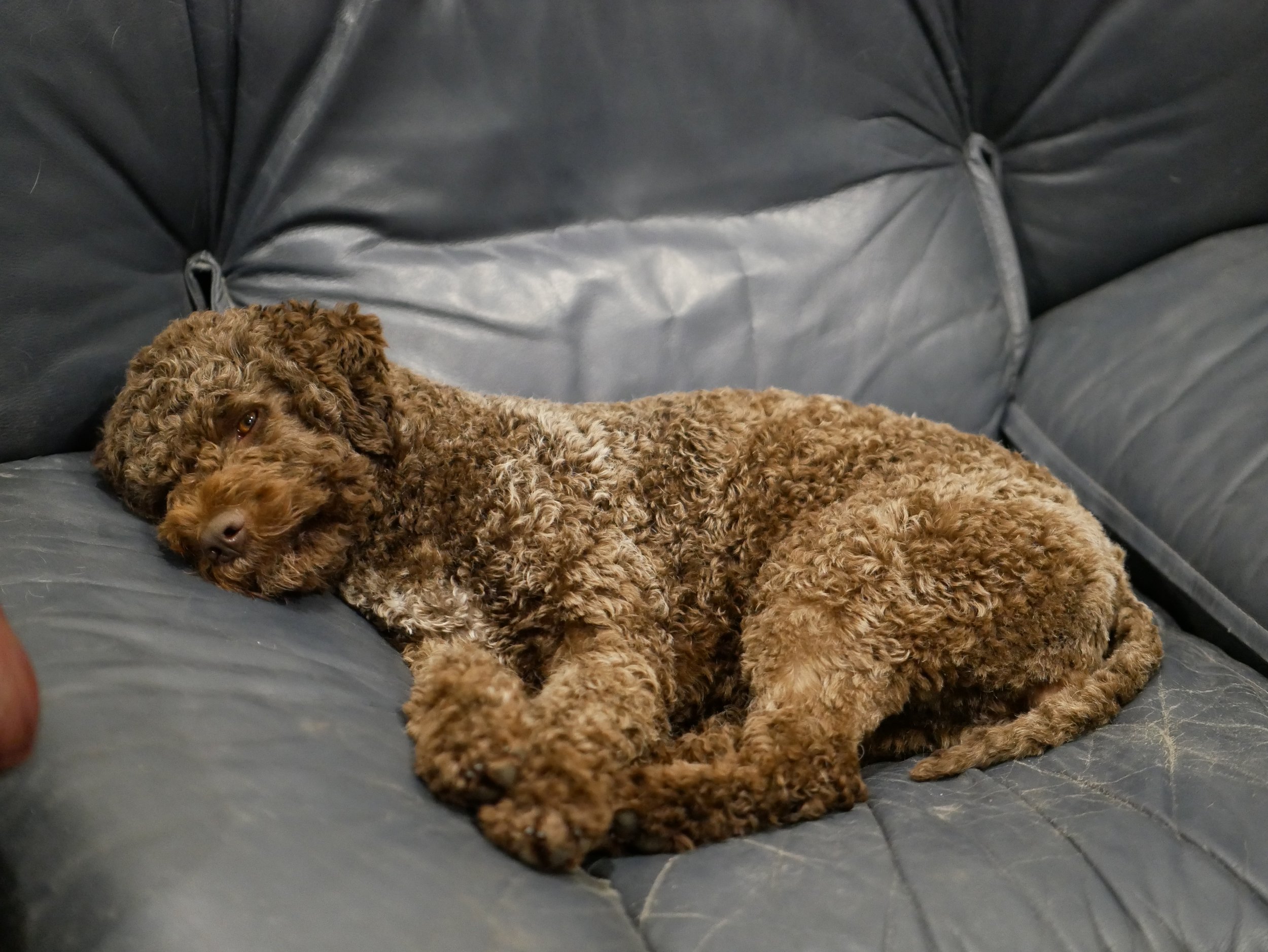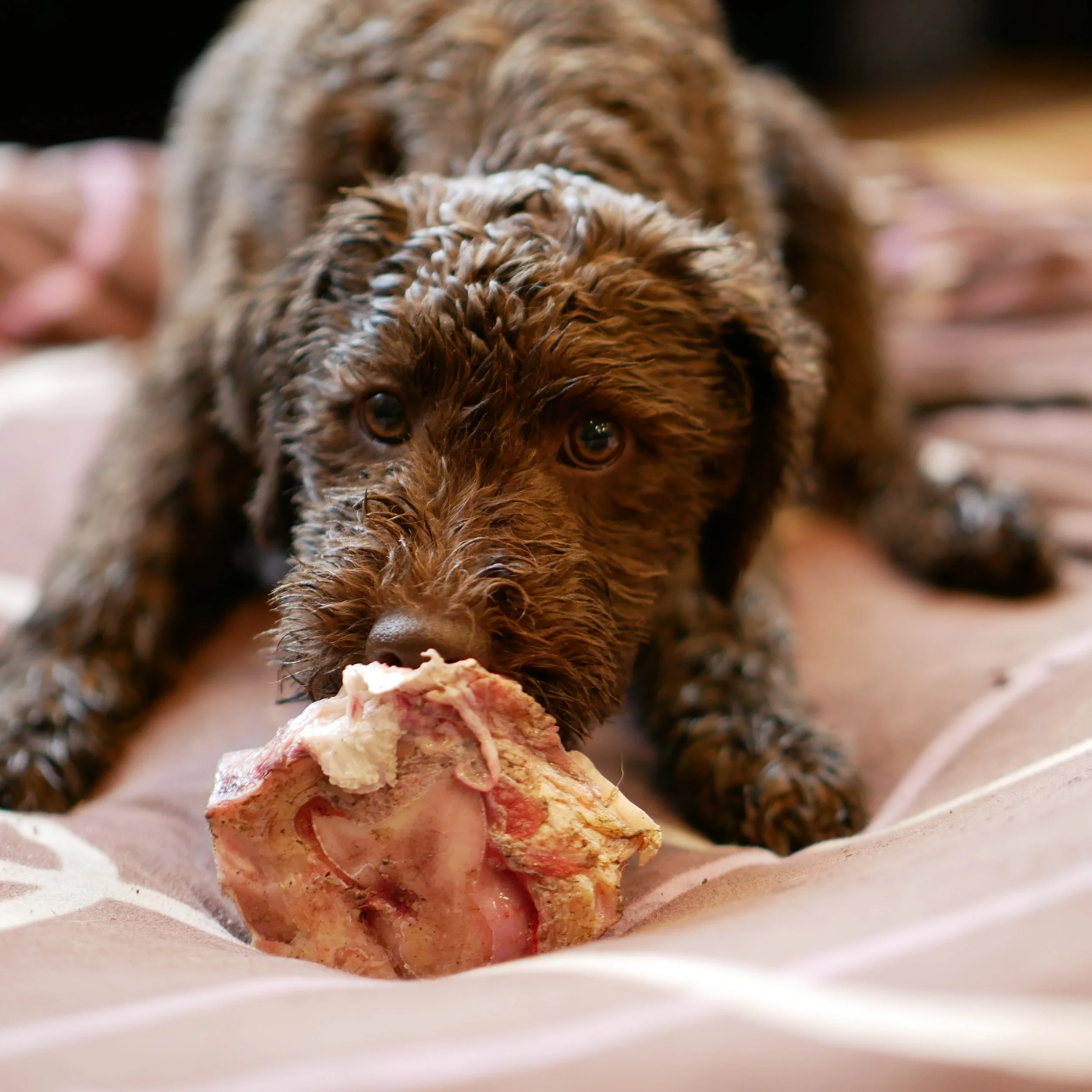Hello the New Puppy Owner!
Congratulations on your new family member.
Your puppy is going through a rapid physical, mental and emotional development. Please remember that he/she has never been away from mom and siblings. Your puppy will require lot’s of your time and patience to help it have a smooth and easy transition into your surroundings. Please read the article on the Critical Periods in your Puppy’s life to help you be as informed as possible of the different brain development stages.
Your puppy must meet and interact with many different people every day and enjoy the experience.
Take your puppy out and about in the big, wide world even if he/she is not fully vaccinated yet. The chance of contracting Parvovirus or Distemper around Vancouver where dogs are vaccinated and well-cared-for is minimal. The greater risk is in raising a puppy who cannot cope with the world around him and develops behavior problems.
What to feed your puppy
Your puppy has been fed raw diet. Please visit OUR DOGS DIET in Resources. You will receive a sample of frozen food when you pick up your puppy if you didn't get the same food to make an easy transition. At 8 weeks a puppy fed 3 meals a day. By 10 weeks 2 meals a day is enough. Your puppy was introduced to chicken, lamb, beef and turkey as a source of protein. Lettuce and cucumber salad with olive oil makes a great addition. Goat milk can replace middle meal.
As you will be teaching your puppy to be a good dog you will give puppy lots of quality treats during the day. Your puppy is able to chew raw meaty bones, raw chicken with bones. Although puppy does not have adequate teeth to chew the bone, at this time it teaches them to rip meat of the bone and is very enjoyable. Make sure to give large chunks so puppy can not swallow it. Monitor puppy while eating.
Every puppy /dog is different and some puppies need more food some less and this will change depending on activity. The best judge for weight is to feel your puppy ribs, if they have some padding cut back a bit, add more vegetables and fruits. Also if the pup seems really hungry or too thin increase food. If you want to change your puppy food, do it gradually over 10 days.
Knuckle bones are great to keep puppy busy and clean teeth.
Housebreaking
Potty training can be a very frustrating time. Remember that the puppy has very little control of the bladder until around 4 months of age. This then puts the responsibility on us to help provide the puppy with success in learning where and when to go. The puppy should be taken out every 2 hours (except when sleeping) and more often after eating, waking and play. Tell the puppy “go potty” and when it goes give a treat and say “good potty”. I encourage you to have a controlled environment as soon as the puppy comes home. This will help keep the puppy and your home safe until the puppy can be trusted. You can attach one or more X- Pens together and then put newspapers in a corner of the pen for any accidents. The crate, water bowl, food dish, toys and a bed are all in this play pen area. This pen should be set up in the area that you spend most of your time in. (off the kitchen or family room). Do not isolate the puppy to a laundry room, basement or garage. In the beginning when the puppy is young it should only be out of the pen when supervised. The puppies, have been successfully using a dog door to the outside to do some of their business.
Helping the puppy sleep through the night. I would not lock the puppy in the crate until it’s potty training is well underway. Instead leave the door off the crate or clip it to stay open and have the puppy contained in a secure X-pen with the crate inside the pen. It is ok to sleep on the couch or floor beside the pen to reassure the puppy that it is not alone and that it is time to sleep.
Puppy Checklist
The puppy will have a collar when it arrives to you. This collar will not fit for long and you will need to check it daily and adjust as the puppy grows.
Leash
I like a 6’ leash, I do not like retractable leashes as they encourage pulling.
Crate
You will need two crates if you are planning to crate train. One for in the car, this should be a plastic dome style crate which will protect the dog if you are in an accident. The second crate should be a metal crate for use at home.
X-Pen
I use these pens for young puppies, you can not have enough of them. Lagotto puppies are the best climber so you might not be able to keep your pup inside for long. If you are planning to keep your puppy to one area baby gates would work better.
Bedding
I use elevated cot beds for outside and Mammoth beds for inside. Might add that my dogs happily sleep on sofas and bed.
Toys
Durable toys are a must, watch that the puppy is not chewing off any pieces of things that can be swallowed and cause a blockage. I like to use interactive toys for the puppies such as treat balls. Puppies enjoy old socks and shoes to chew even more then new toys. Large cardboard boxes are favorite object as they can climb in it and chew some off. Plastic water bottles make great sounds and puppies enjoy playing with them. Squeaky balls are favorite among my Lagotto girls, then squeaky toys. Simple stuff will entertain your puppy as successfully as expensive toys. Even a simple stick cut from a tree can be very amusing to a young puppy. Only boredom must be avoided, as a puppy will find something to chew on and you might not like it.
Knuckle bone
Treats and Chews
I use cheese, dry meat/chicken/turkey/fish, baked meat as a reward treat, if you buy treats make sure they are not too rich and cause loose stool. I recommend bully sticks as a chew, Yak Milk sticks or the rawhide treated with digestive enzymes
Enjoy your puppy!



